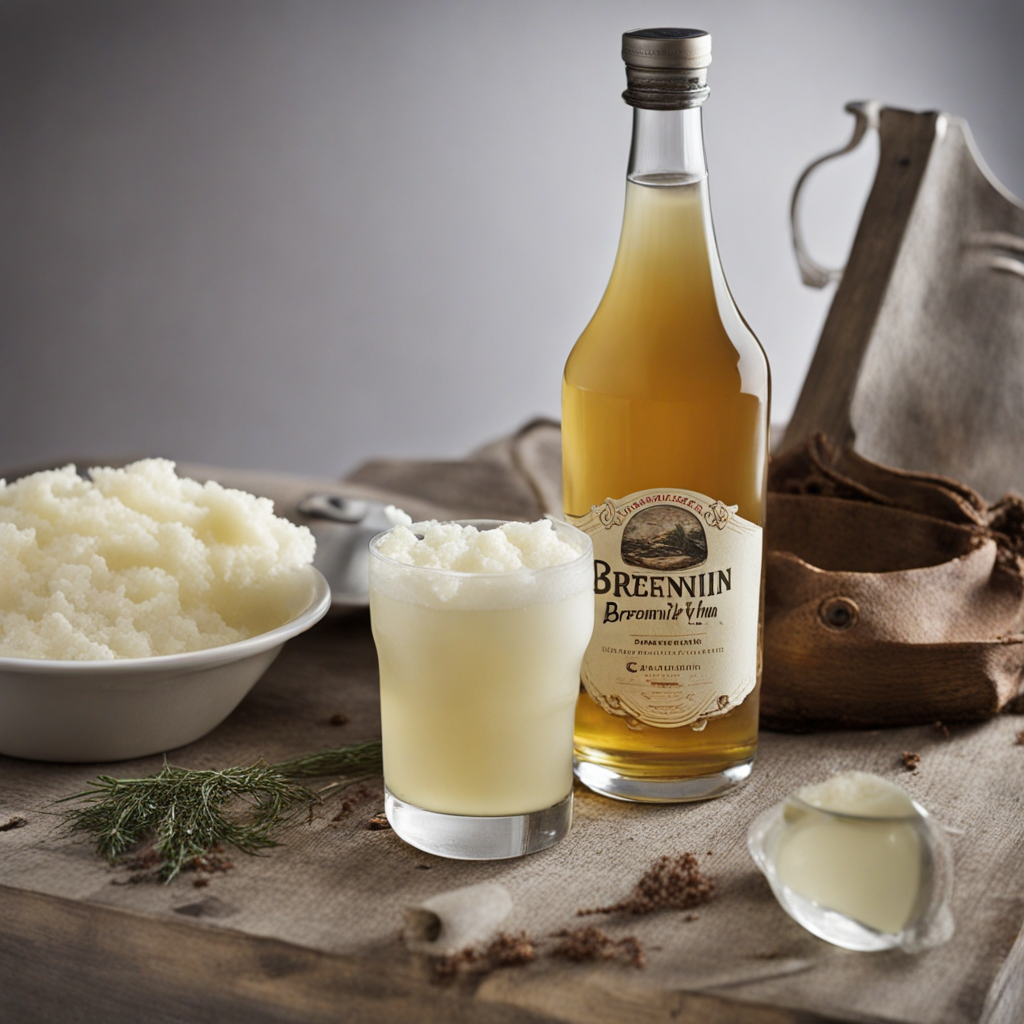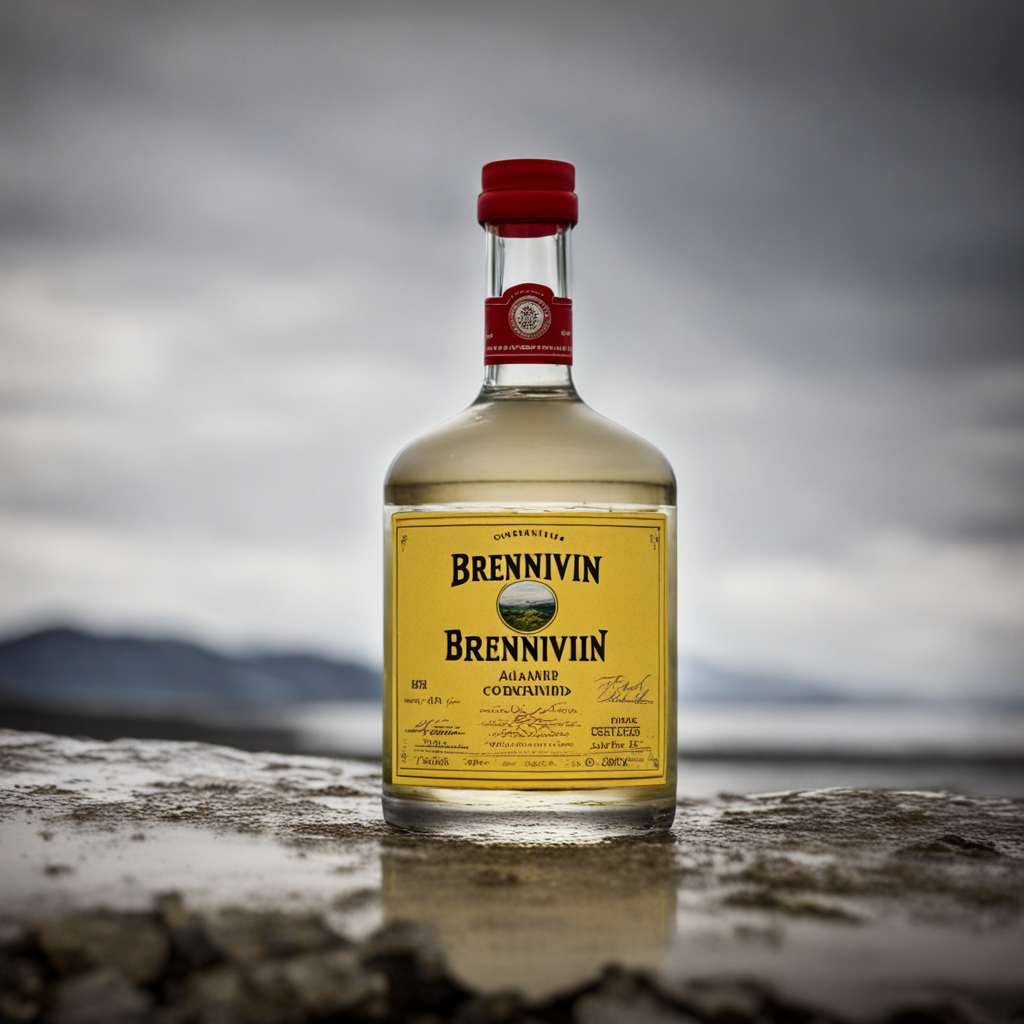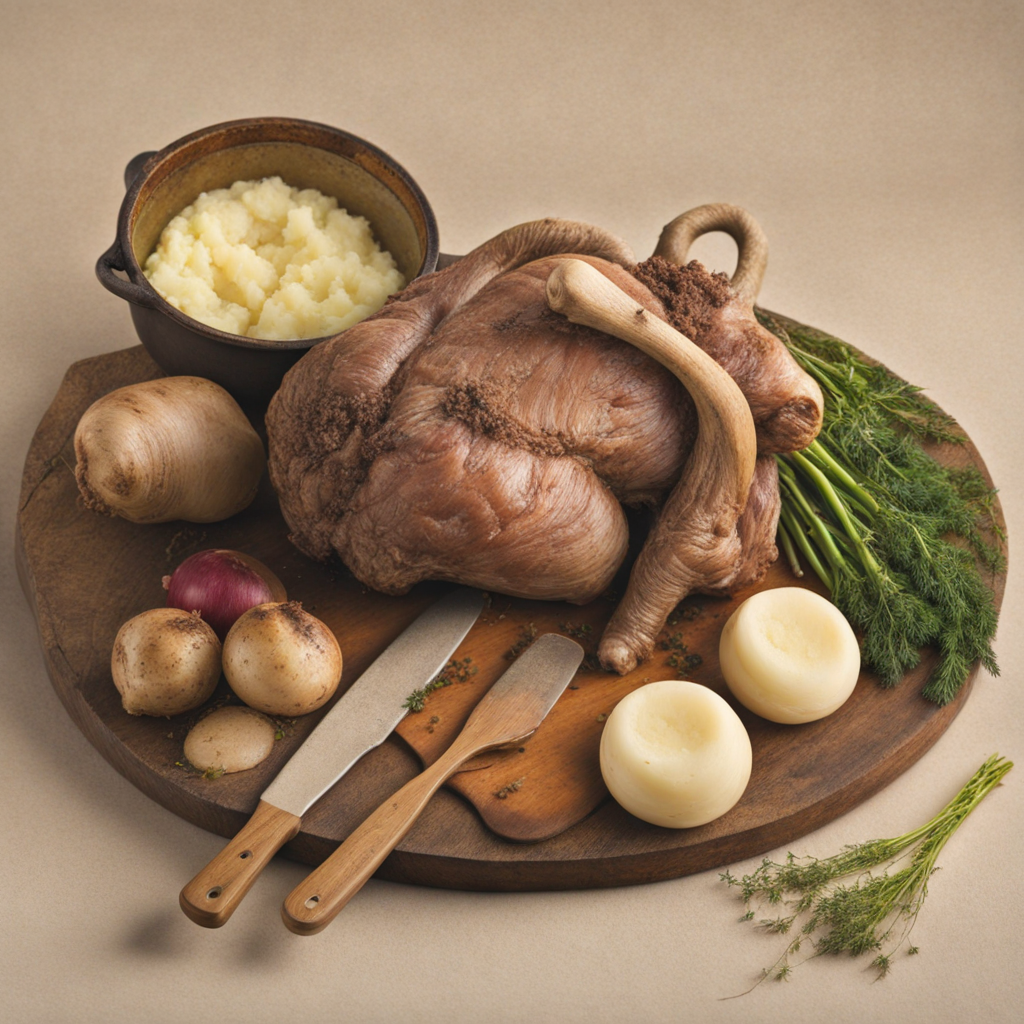Brennivín
Brennivín is an iconic Icelandic spirit, often referred to as "Black Death," and is deeply embedded in the cultural fabric of the country. This distinctive schnapps is made from fermented grain or potato mash, which is then distilled and flavored with caraway seeds. The resulting clear liquid has a unique, herbal aroma that tantalizes the senses. The flavor profile is bold and complex, with a robust earthiness that reflects the rugged Icelandic landscape. This spirit is traditionally enjoyed in a shot glass, often accompanied by traditional foods that complement its strong taste, making it a staple at festive gatherings and celebrations throughout Iceland. The process of making Brennivín is steeped in history, dating back to the early 20th century when the production of schnapps became popular in Iceland. The spirit’s signature flavor comes from the caraway, which not only provides a warm, slightly sweet note but also a hint of spice that lingers on the palate. As you take a sip, you might notice its smooth texture, which glides effortlessly, making it both refreshing and warming. The experience of drinking Brennivín is often enhanced by its pairing with traditional Icelandic fare, such as fermented shark (hákarl) or rye bread, which help to balance out its intensity. For those adventurous enough to explore this unique taste, Brennivín offers a glimpse into Icelandic heritage and culinary traditions. It embodies the spirit of the land, with its raw and unfiltered characteristics mirroring the stark beauty of the Icelandic wilderness. Whether you savor it neat or use it as a base for creative cocktails, Brennivín promises an unforgettable experience that captures the essence of Iceland’s rich cultural tapestry. This spirit invites you to expand your palate and discover a new world of flavors that are unlike anything you've encountered before.
How It Became This Dish
Brennivín, often referred to as "Icelandic schnapps," is a traditional distilled spirit that has deep roots in Icelandic culture and history. Its origins date back to the early 20th century, a time when the country was grappling with the challenges of prohibition. In 1915, Iceland imposed a ban on the sale of alcohol, which lasted until 1935. During this period, locals adapted by creating their own spirits, and Brennivín emerged as a product of this ingenuity. The spirit is primarily made from fermented grain or potato mash, which is then distilled and flavored with caraway seeds, giving it a distinctive taste that sets it apart from other spirits. The name "Brennivín" translates to "burning wine," a nod to the high alcohol content and the warming sensation it produces when consumed. Traditionally, Brennivín is bottled at around 37.5% to 40% alcohol by volume, making it a potent spirit. The drink is often served ice-cold and is typically accompanied by the traditional Icelandic dish of fermented shark, known as "hákarl." This pairing has become a cultural emblem, showcasing the ruggedness and resilience of Icelandic cuisine, where local ingredients and preservation methods are celebrated. Culturally, Brennivín represents more than just a drink; it embodies the spirit of Iceland and its people. It is often associated with celebrations, family gatherings, and national holidays. The drink gained significant importance during the mid-20th century as Iceland began to establish its national identity. During this time, Brennivín became a symbol of pride and heritage, reflecting the country's Viking past and the resourcefulness of its inhabitants. The spirit's popularity surged, and it became a staple in bars and restaurants across the nation. Brennivín's development over time has been closely tied to changes in Icelandic society and global trends in the spirits industry. In the early years, the production of Brennivín was largely unregulated, leading to a variety of homemade versions that varied in quality and flavor. However, as the country modernized and embraced more industrialized methods of production, Brennivín began to be manufactured on a larger scale. In 1935, with the repeal of prohibition, commercial production of Brennivín began, and it was soon being distributed nationwide under the auspices of the state-run distillery. The most notable brand of Brennivín is "Ölvisholt," which was established in 2005 as a craft distillery. Ölvisholt has played a crucial role in reviving and modernizing the spirit while remaining faithful to its traditional roots. The distillery uses locally sourced ingredients, including pure Icelandic water and volcanic rock, ensuring the authenticity of the product. Ölvisholt’s Brennivín has garnered international acclaim, representing a new wave of Icelandic spirits that emphasize quality and craftsmanship. As Brennivín has evolved, so too has its role in Icelandic culture. In recent years, there has been a resurgence of interest in traditional foods and beverages, spurred by a growing global fascination with Icelandic cuisine. Brennivín has found its place in the culinary scene, being featured in innovative cocktails and gourmet dining experiences. Chefs and bartenders have embraced the spirit, incorporating it into dishes and drinks that highlight its unique flavor profile. The spirit's cultural significance extends beyond its consumption. Brennivín has become a symbol of Iceland’s identity, often featured in art, literature, and music. The drink is regularly referenced in Icelandic folklore and modern sagas, reinforcing its place in the collective memory of the nation. Festivals and events celebrating Icelandic culture frequently include Brennivín tastings, allowing both locals and tourists to experience this integral part of Icelandic heritage. Today, Brennivín is often regarded as a rite of passage for visitors to Iceland. The experience of tasting Brennivín, especially alongside traditional Icelandic foods, offers a glimpse into the country’s unique culinary traditions. Tourists often seek out this authentic experience, motivated by the desire to connect with the local culture and history. As a result, Brennivín has become an essential component of Iceland's tourism economy, with many distilleries offering guided tours and tastings. The future of Brennivín appears bright as the spirit continues to evolve while respecting its traditional roots. Craft distilleries are emerging across the country, each bringing their own interpretations and flavors to the classic spirit. This diversification has spurred a new wave of innovation, leading to flavored variations and unique blends that cater to contemporary palates without losing the essence of what makes Brennivín special. In conclusion, Brennivín is more than just a traditional Icelandic schnapps; it is a historical artifact that tells the story of a nation’s resilience and creativity. From its humble beginnings during prohibition to its current status as a symbol of national pride and culinary tradition, Brennivín has endured and adapted, maintaining its relevance in the ever-changing landscape of food and drink. As Iceland continues to embrace its rich heritage, Brennivín will undoubtedly remain a cherished part of its cultural fabric, inviting both locals and visitors to partake in its storied legacy.
You may like
Discover local flavors from Iceland







